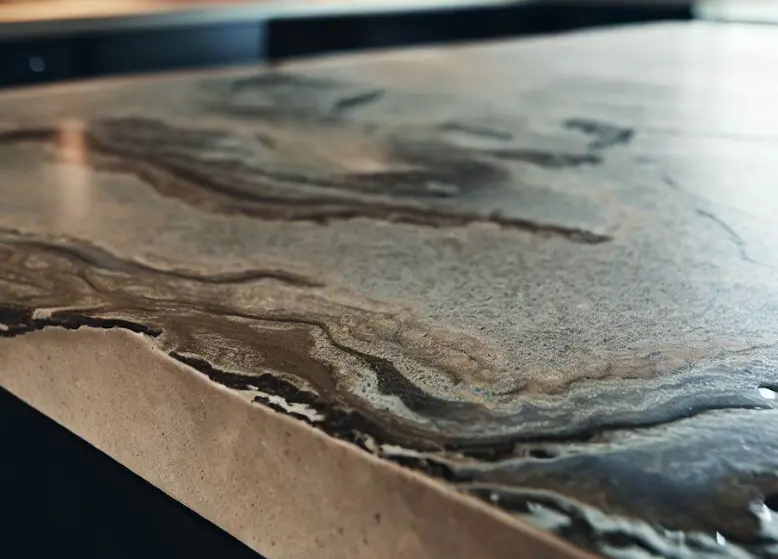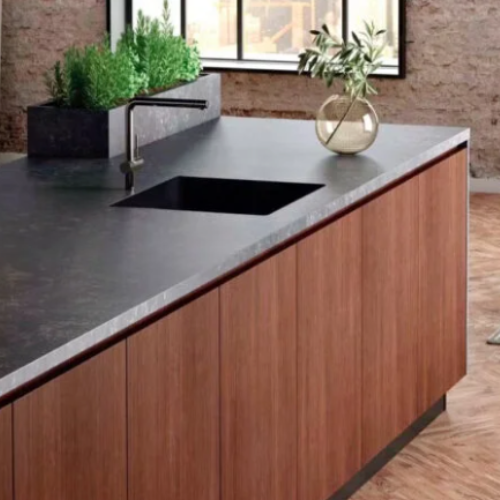
DuPont’s Awareness of the Dangers of Artificial Stone Product, Corian: 2014 – 2018
March 5, 2024
Hanwha L&C USA LLC and Hyundai L&C USA LLC Continue to Produce Dangerous Artificial Stone Products
March 12, 2024Blog

National Institute for Occupational Safety and Health Shed Light on the Dangers of DuPont’s Artificial Stone Product, Corian, 2019 – 2024
Recent studies, particularly those conducted by the National Institute for Occupational Safety and Health (NIOSH) and other research entities, have shed alarming light on the significant health risks posed by dust generated from fabricating materials like Corian®, a popular solid surface composite used in countertops. These findings are critical, especially for workers in the countertop manufacturing industry, who are exposed to hazardous dust particles that could lead to severe pulmonary diseases.
In 2019, NIOSH researchers undertook a detailed analysis of emissions from sawing Corian®, focusing on the composition and potential health implications of airborne dust particles. Their findings revealed that a significant fraction of the mass removed during sawing becomes respirable dust, with alumina trihydrate, a key component of Corian®, dominating the composition of these airborne particles. This is particularly concerning given that respirable dust can reach permissible exposure limits much faster than the volatile organic compounds (VOCs) also emitted during the process, posing an immediate threat to workers' respiratory health.
Further compounding these concerns, a 2019 study exposed mice to varying concentrations of Corian® dust, revealing that higher doses induced inflammatory responses and pulmonary damage comparable to, and in some cases more severe than, those caused by silica, a known hazardous substance. These findings are particularly alarming, highlighting the urgent need for comprehensive safety measures and regulations to protect workers from the harmful effects of Corian® dust exposure.
The toxicity of respirable Corian® particles was further confirmed in a 2020 study on human alveolar macrophages. The research demonstrated a clear dose-dependent cytotoxic effect, with smaller particle sizes exhibiting greater toxicity. This underscores the insidious nature of respirable Corian® particles, necessitating stringent controls and protective measures in workplaces where Corian® is fabricated.
Adding to the body of evidence, a 2021 study by NIOSH characterized emissions from sanding Corian® with different sandpapers, affirming that aluminum trihydrate from Corian® remains the dominant composition of respirable dust, irrespective of the sandpaper material used. This finding is critical for understanding the primary source of hazardous dust in countertop fabrication processes and underscores the need for targeted interventions to mitigate exposure.
The dangers of respirable particulate matter generated during the fabrication of Corian® and similar materials were further highlighted in a 2021 study that characterized workers' exposure in a small workshop. The study found significant variances in respirable particulate matter concentrations, with levels spiking on days when more workers were present, suggesting that current workplace practices may be inadequate to protect workers from hazardous dust exposure.
In a comprehensive review published in 2022, NIOSH researchers synthesized existing knowledge on hazardous dusts from fabricating solid surface composites and engineered stone materials. They noted the rapid rise in popularity of these materials due to their aesthetic qualities and cost-effectiveness but cautioned that both types of materials emit airborne dusts during fabrication that pose significant pulmonary health risks. The review underscored the critical need for more research, better exposure control methods, and enhanced worker protection strategies in the countertop fabrication industry.
A poignant case report published in 2024 detailed the plight of a 48-year-old man who developed severe pulmonary fibrosis after being exposed to aluminum trihydrate-containing composite material in a countertop production facility. This case, along with previous findings, serves as a stark reminder of the potential for life-threatening lung diseases associated with occupational exposure to hazardous materials like Corian®.
These studies collectively highlight a grave concern within the countertop fabrication industry regarding the health risks posed by materials like Corian®. The evidence is clear: there is an urgent need for regulatory bodies and manufacturers to take decisive action to protect workers from the insidious dangers of respirable dust. This includes implementing stricter safety protocols, providing comprehensive training on dust mitigation, and ensuring the availability of appropriate personal protective equipment. Failure to address these risks not only jeopardizes the health and well-being of workers but also challenges the ethical and social responsibilities of manufacturers and employers in safeguarding their workforce.


